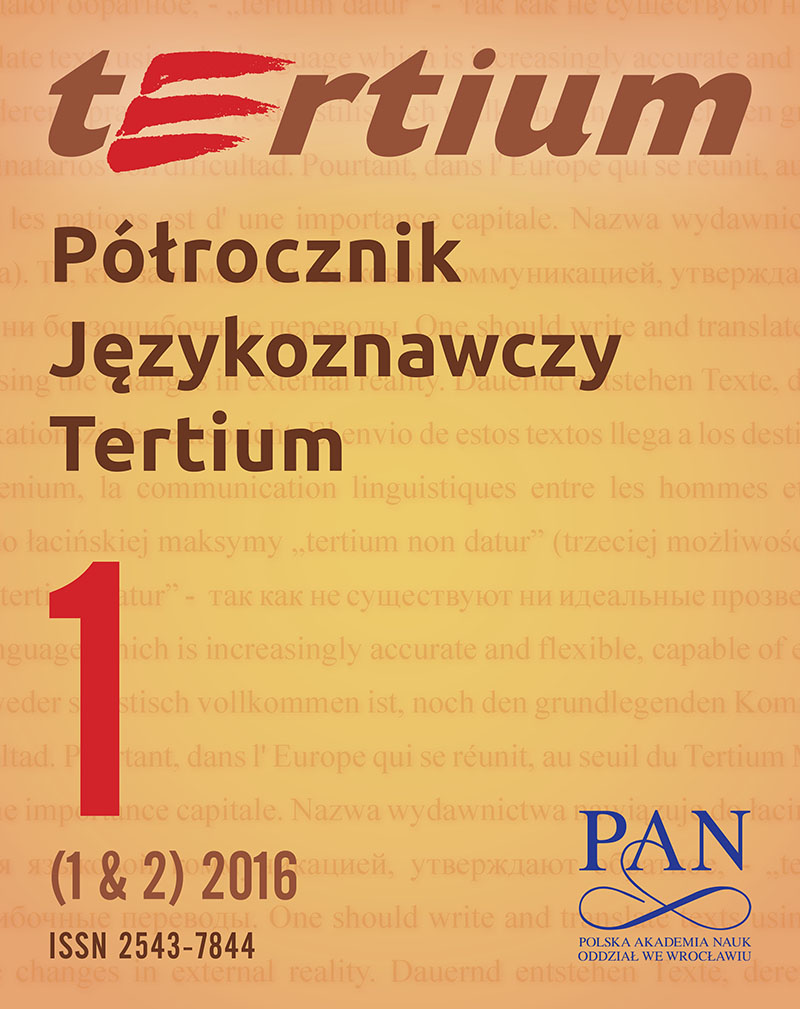
We kindly inform you that, as long as the subject affiliation of our 300.000+ articles is in progress, you might get unsufficient or no results on your third level or second level search. In this case, please broaden your search criteria.


W artykule opartym na materiale z prasy wyspecjalizowanej autorka porusza następującezagadnienia: dlaczego tak bardzo atrakcyjny jest dla dziennikarzy styl potoczny, jakie składnikii cechy tej odmiany traktowane są jako szczególnie użyteczne, jakie są skutki częstego użyciaform potocznych dla procesów przeobrażania stylu publicystycznego i wybranych gatunkówprasowych. Potoczność rozpatrywana na płaszczyźnie tekstu zyskuje na komunikacyjnejatrakcyjności dlatego, że pozwala nadawać wypowiedziom znamiona komunikatówskierowanych, nastawionych na kontakt z drugim człowiekiem, umożliwia ucieczkę odabstrakcji w stronę mówienia (czy raczej pisania) konkretnego, bliskiego codziennemudoświadczeniu, obrazowego i zaangażowanego. Dzięki stosownym zabiegom stylizacyjnympublicyści budują z odbiorcą wspólny świat i kształtują określoną wizję tego świata: (1) zpunktu widzenia odbiorcy – z uwzględnieniem jego potocznych wyobrażeń i doświadczeń; (2)zgodnie z oczekiwaniami odbiorcy, a więc przystępnie, plastycznie i sugestywnie; (3) z(fingowanym) udziałem odbiorcy; (4) za pomocą środków językowych znanych odbiorcy(potocznych) lub środków wykreowanych przy użyciu technik stylizatorskich typowych dlawypowiedzi potocznych. // In the article which is based on specialized press material, the author raises the following issues: why is the colloquial style so attractive for journalists? What features and factors of this variety are treated as particularly useful? What are the results of the frequent use of colloquial forms for the processes of transforming the journalistic style and selected press genres? Colloquialisms considered at the textual level gain the communicative attractiveness because they allow utterances to acquire the status of targeted messages, aimed at seeking contact with a fellow human being, and because they facilitate the escape from abstraction towards concrete speaking (or rather writing), close to everyday experience, imagistic and involved. Thanks to appropriate stylization techniques, journalists construe the world in common with the audience and shape a specific vision of this world: 1/ from the point of view of the audience, taking into account their colloquial images and experiences; 2/ in accordance with the audience expectations, i.e. simply, visually and suggestively; 3/ with the (fake)participation of the audience; 4/ through linguistic means known to the audience (colloquial)or the means created with the stylization techniques typical of colloquial utterances.
More...
Współczesne media elektroniczne stały się celem licznych badań językoznawczych. Niniejszaanaliza dotyczy jednej z najpopularniejszych ich odmian – krótkiej wiadomości tekstowej. 160prywatnych SMSów, zarówno w języku polskim, jak i angielskim przebadano pod względem ichcech formalnych, skupiając się głównie na aspekcie redukcji tekstu pod względem obecnościbądź eliminacji elementów fatycznych, szczególnie zwrotów adresatywnych, powitań,pożegnań oraz emotikonów, a także interpunkcji. Badanie przeprowadzone również wodniesieniu do wcześniejszej analizy wiadomości mailowych wykazało znaczny procenteliminacji elementów konwencjonalnych tekstu w SMSach w porównaniu z mailami,szczególnie zwrotów adresatywnych i powitań, redukcję formalną zwrotów pożegnalnych orazomijanie znaków przystankowych, pokazując tym samym, jak dużo elementów w komunikaciejest redundantnych. Analiza wykazała również widoczne różnice między SMSami polskimi iangielskimi, zwłaszcza pod względem frekwencji takich elementów, jak podpis, zwrotpożegnalny, użycie emotikonów oraz skracanie wyrazów, które znacznie częściej występowaływ tekstach angielskich niż polskich. // Contemporary electronic media have become a frequent object of linguistic research. The present analysis concerns one of its most popular manifestations – the short text message. 160private text messages, both Polish and English, have been investigated in terms of their formal features, with a focus placed mainly on the aspect of text reduction with respect to the presence or absence of its phatic elements, primarily forms of address, greetings, leave-takings,emoticons as well as punctuation. The analysis conducted also with reference to an earlier investigation of the electronic mail has demonstrated a significant percentage of the conventional text elements elimination in text messages in comparison to emails, especially of forms of address and greetings, a formal reduction of leave-taking formulas as well as the omission of punctuation, this way indicating how many elements of communication appear to be redundant. The analysis has also shown visible differences between Polish and English text messages, particularly in terms of the frequency of the use of such aspects as the signature, the leave-taking formula, the use of emoticons and word abbreviations, which appear to be a more typical element of English rather than Polish text messages.
More...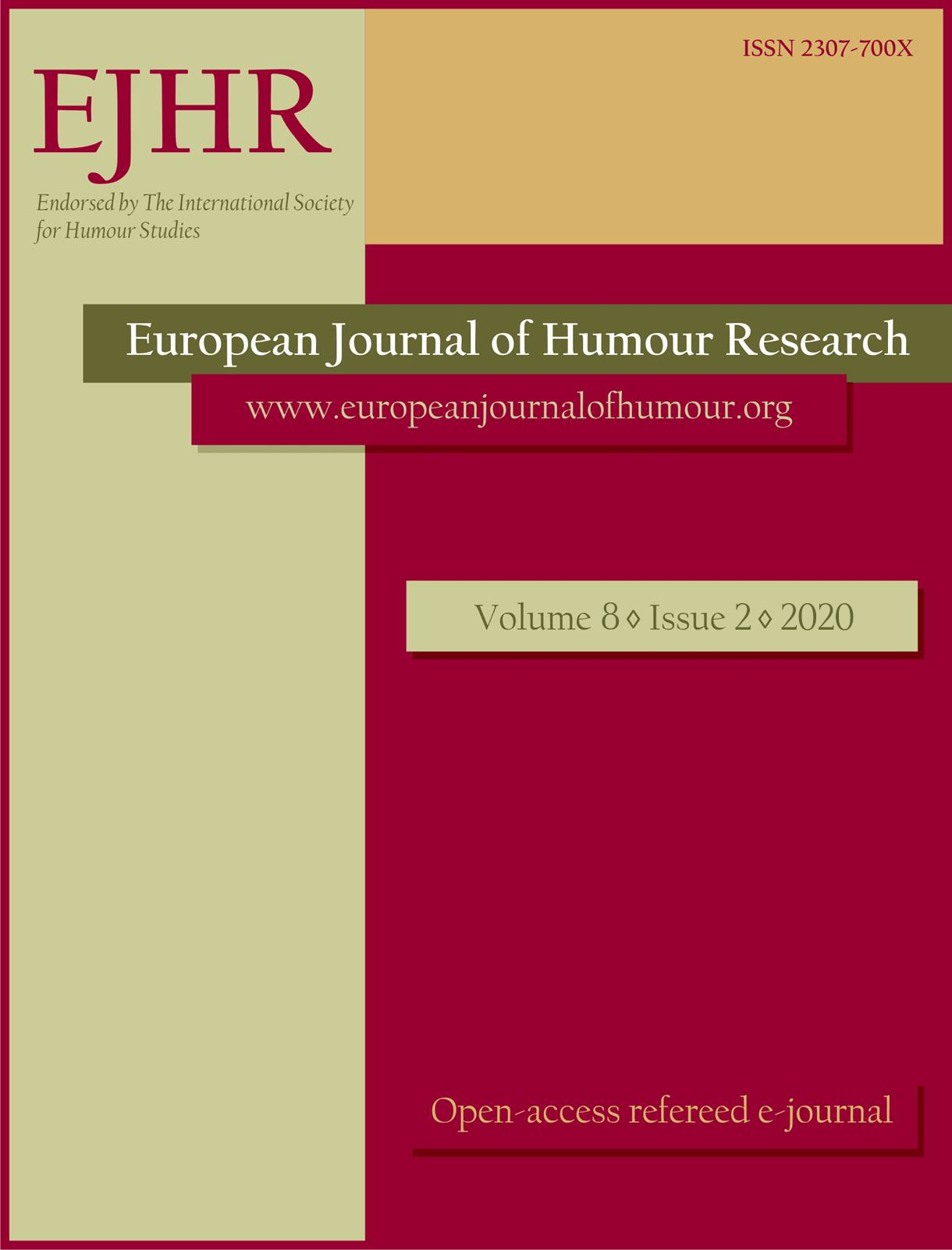
Failed humour in conversational exchanges has received increasing attention in humour research (see Bell 2015; Bell & Attardo 2010). However, tensions between what constitutes successful and failed humour have yet to be fully explored outside conversational humour. Drawing on Hay’s (2001) classification of humour stages and using a socio-cognitive approach to pragmatics to examine responses from Spanish L1 and L2 users to differing combinations of structural and content features in cartoons, the present study aims to explore what factors contribute to successful and failed responses to multimodal humour. Previous research has predominantly investigated the role of caricature as one of the prototypical features of cartoons affecting humour communication, suggesting that this feature plays an active role in the recognition of the humoristic genre (Padilla & Gironzetti 2012). Findings from the present study indicate that caricature operates not only in the recognition, but also in the understanding and appreciation stages. In particular, our results point to two other roles of caricature as a secondary incongruity and as a factor that can trigger appreciation through empathy and/or a sense of superiority. Importantly, this investigation indicates that the presence of secondary incongruities can compensate for a partial lack of understanding, highlighting the relevance that this type of incongruity has in humour appreciation.
More...
Studying cartoons in Romanian humorous news is a great way to underline the diversity of humour’s mechanisms and construction. The common topic of cartoons in Romanian media is politics, but there are also a great number of cartoons exploring subjects such as art, science, society or famous people. Unlike verbal humour, wherein incongruities are text-based, in cartoons, incongruities can emerge through the interaction of image and text, between two elements in the image, or even between the texts in the balloons (Hempelmann & Samson 2008). The present study aims at analysing how humour emerges differently, depending on their topic, in cartoons created by the Romanian humorous media websites Times New Roman and Academia Catavencu, as these have been the two of the most controversial humorous news websites for quite some time. I intend to argue that, when it comes to political cartoons, the methods of humour are quite complex, equally relying on the image and the text, using polysemy, paronymy or syllepsis to create humour, while cartoons about society or gossip are usually based on implicitness and exaggeration, mostly found in images and symbols, as the targeted topics or people do not require such a complex background in order to make readers laugh. I have also observed that cartoons that rely less on text have more powerful symbols, which are full of various significations that help the readers make all the necessary connections to correctly interpret the image.
More...
The present paper is aimed at exploring humour and cultural aspects in TED talks recorded at Hungarian independent TEDx standard events. Applying Speck’s (1991) humour taxonomy, a corpus of 30 Hungarian language talks have been classified based on Barry & Graca’s (2018) humour typology groups and further examined by descriptive statistical indicators. Results show that cultural and other national features are reflected in the talks and are appreciated by the audience. Incongruity and disparagement appeared to be a safe comic device to create laughter in highly individualist and masculine cultures; however, relief-based humour is riskier in high uncertainty avoiding countries, as the message may be interpreted differently than expected.
More...
Today’s infotainment clutter puts pressure on advertisers to come up with more surprising and more memorable ads. This need for novelty, creativity, and astonishment does set the expectation bar high, steering ads towards various means of eliciting surprise, including humour, shock, and taboo. In this paper, the author will try to investigate a set of multimodal advertising messages which use (debatable) humour and surprise, with a view to finding trans-cultural similarities and differences in terms of ad appreciation. The primary objective of this paper is to explore attitudinal responses of Taiwanese informants to controversial humorous advertisements in English; to this end, an online survey was conducted to ask them about their interpretations of and feelings towards a selection of ads. Its results will be compared with those obtained from Polish respondents, described in the author’s previous study (Stwora 2020).
More...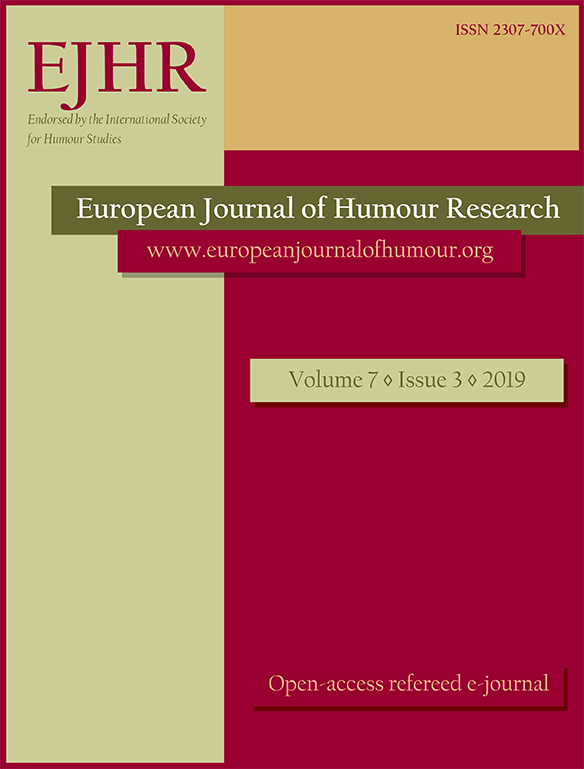
This paper discusses humour and tourism, with a focus on “Spain Marks”, an internationalcampaign used to promote Spain as a tourism destination. The importance of this relationshipsuggests that the use of humour in marketing works as an engagement and loyalty strategy, aswell as to portray the uniqueness of a destination. The “Spain Marks” campaign wasinnovative in its use of humour because it offered a fresh and contemporary image of Spain asa tourism destination. This campaign has been specially selected for its exceptional ironiccharacter. The study aims to understand the humour appreciation of this specificadvertisement using an online survey that was completed by 40 participants. The resultsindicate that the use of humour is a difficult task because what is perceived as fun, attractiveand ironic in any tourism campaign is highly subjective.
More...
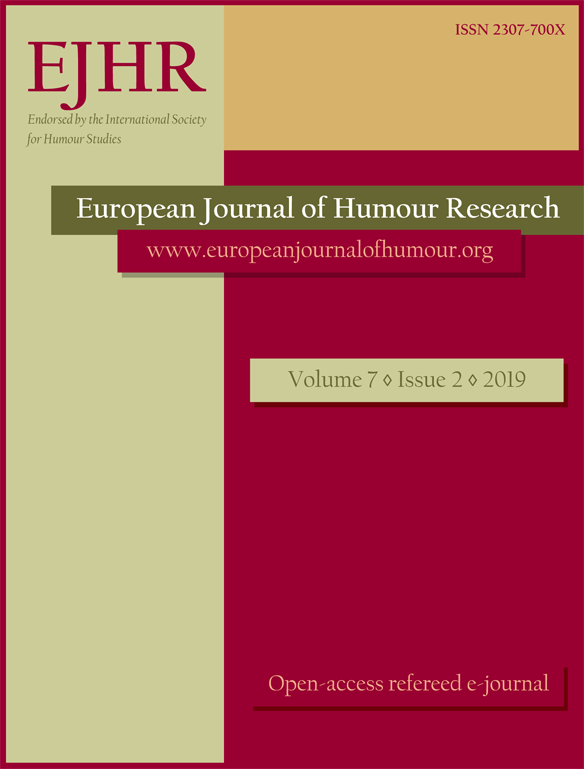
The context for the paper is the inclusion of a 64-year old cartoon in the Political Sciencetextbook that caused an uproar in the Indian parliament in 2012. The controversy drawsattention to the two-facedness of any political cartoon which is an artistic representation of ahistorical event. It is, hence, ambivalent by being an expression of artistic freedom as well asa humorous comment on history where the axis of representation intersects the axis of history.The representation of the Dalit icon, Ambedkar, was objectionable to the political partyespousing the Dalit cause which, through its leader, Tirumavalavan, raised the issue inparliament. The paper posits that the reaction was an event that was hitherto dormant andthat it erupted on account of elements that fed its potential for virality in the environment,thereby, turning it into a fact. To this end, the paper revives interest in the imitation theory ofthe French sociologist, Gabriel Tarde, who, incidentally, was an intellectual influence onAmbedkar. Moreover, it employs Zeno Vendler’s distinction between an “event” and a “fact”,the Deleuzian idea of “assemblage,” and the idea of “conceptual metaphor” as laid out byLakoff and Johnson. The paper reads the vicissitudes of the cartoon in order to theorize theelements that cause virality in a communicative environment.
More...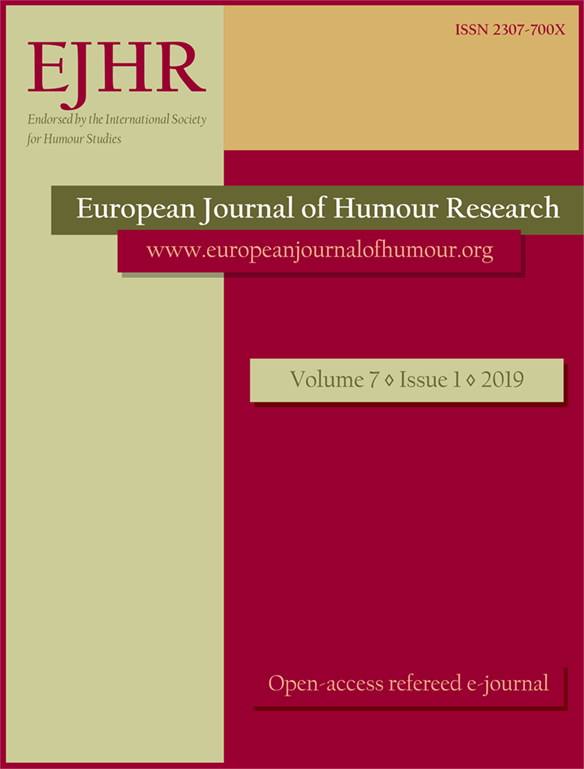
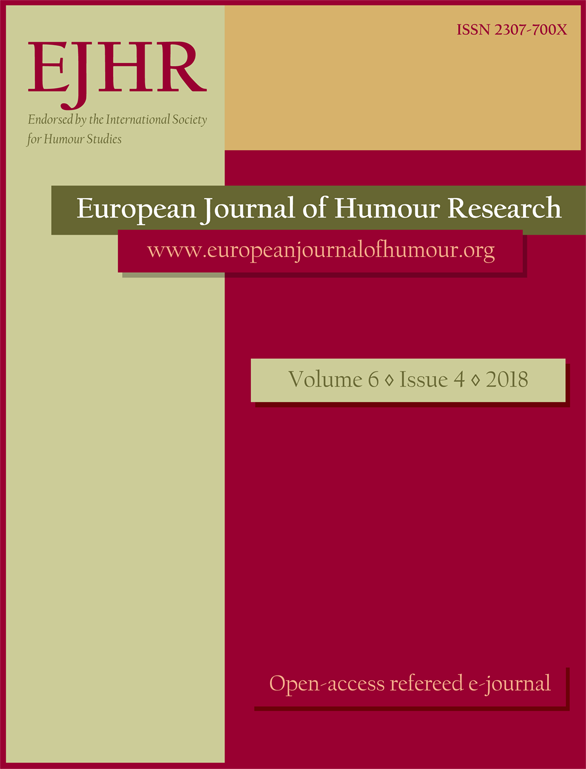
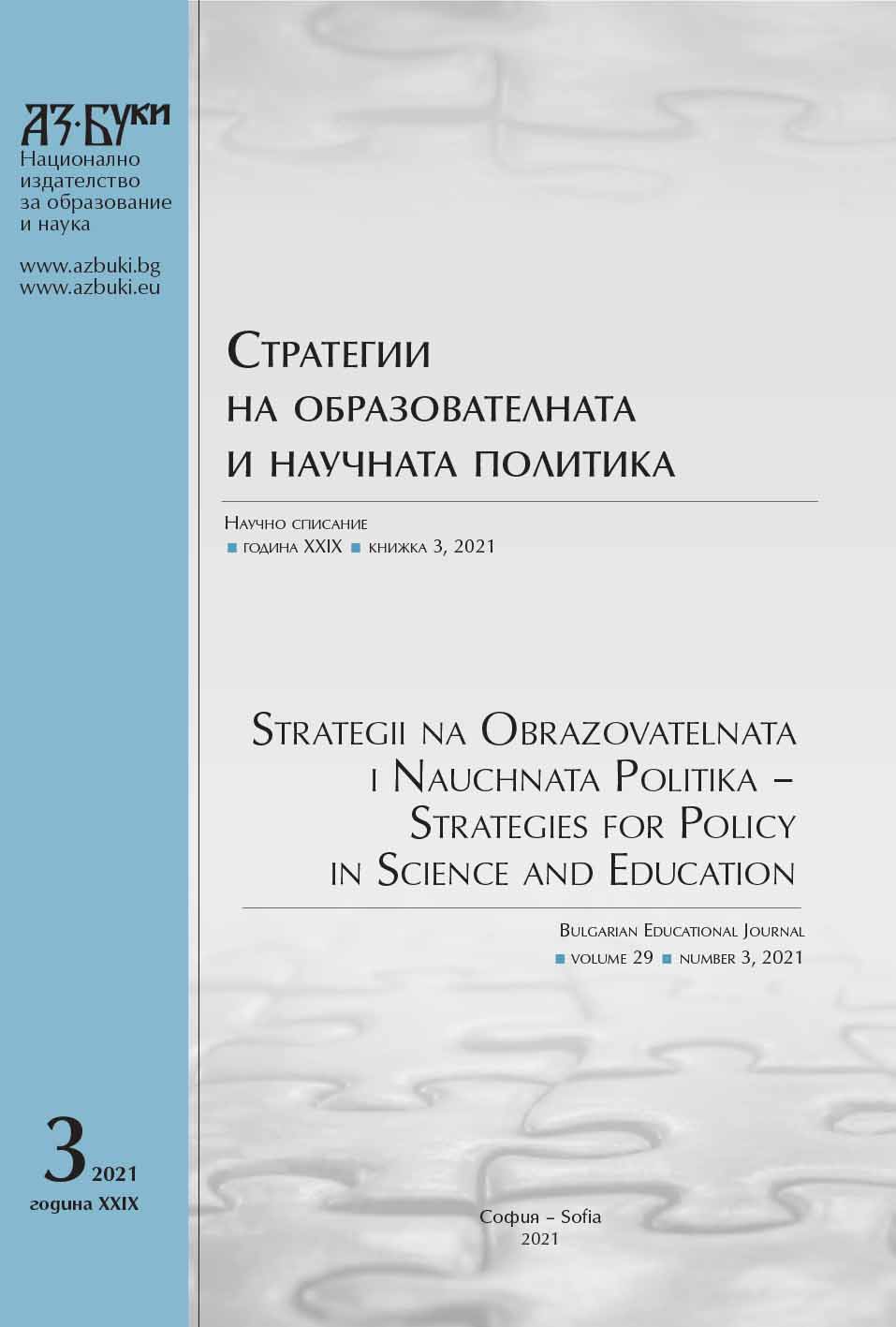
In the process of digitalization and the change of education in almost digital, the professional training of teachers in higher schools is of particular relevance, determined with social and pedagogical importance. This includes a set of a number of individual competences that educators need to possess and develop. The changes in the technologies and economic situation of Bulgaria set new requirements in terms of the skills and individual competencies of the teachers. The purpose of modern higher education is to take into account the current and future needs of the student, as well as to prepare a multi developed person capable of social adaptation in society for the beginning of professional realization and self-improvement. The main objective of this development is to develop a model of the individual competencies of higher education teachers in the digitalization process. The main research methods used in the development are contingent analysis, method of analysis and synthesis, intuitive and systematic approach.
More...
The article describes online learning against the background of theCOVID-19 pandemic in the Bulgarian context of higher education and the challenges faced by university professors during this period and examines their readiness for online learning. The strengths and weaknesses of online learning are considered, as well as the opportunities of higher education to respond to educational problems arising from the COVID-19 pandemic.
More...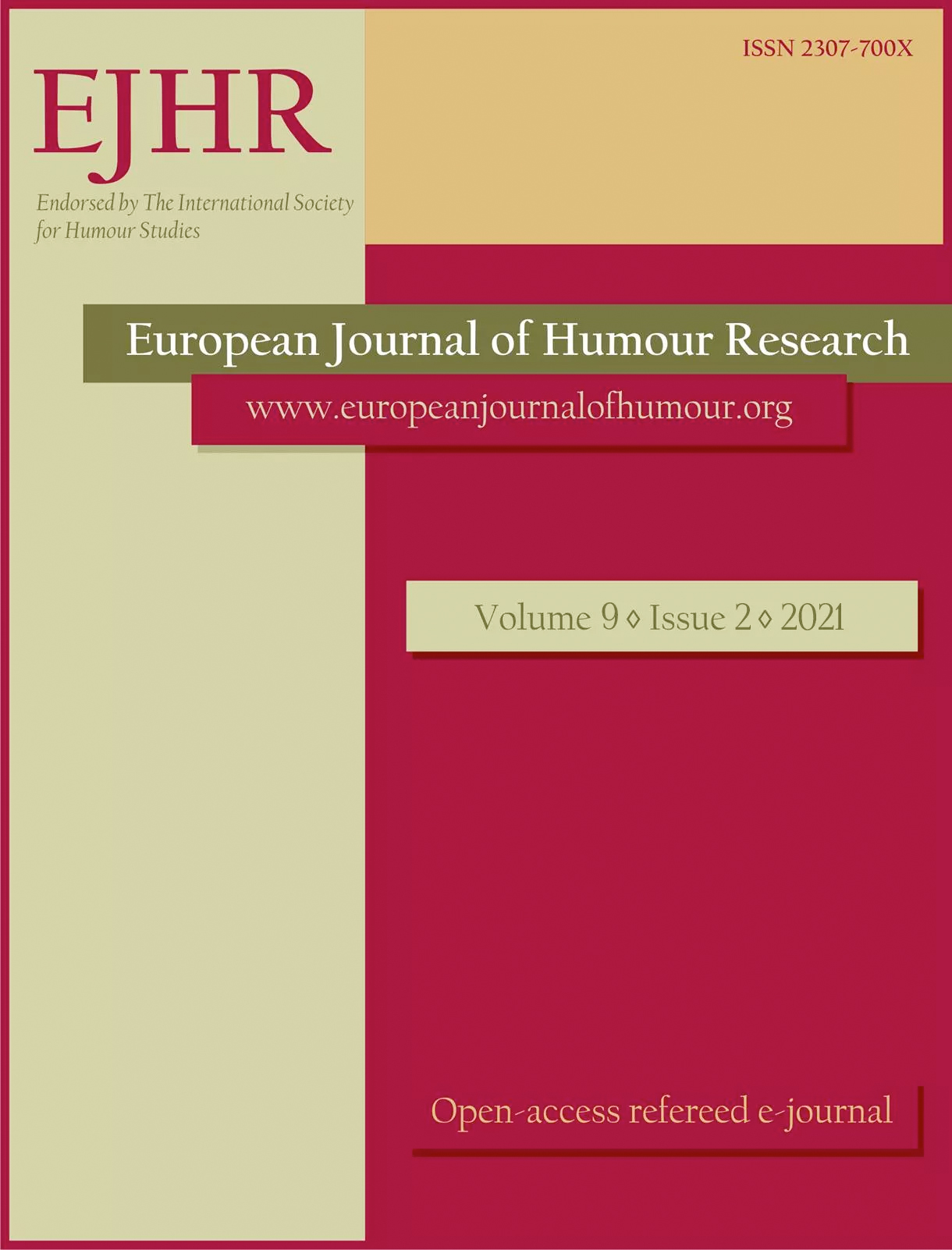
This article arose from the scandal which broke out in Russia in 2018, when Ulyanovsk cadets made an amateur video clip parodying the Benny Benassi’s musical video (2003). Soon, this video had more than a million views. But official Russian media sharply reproached the cadets’ performance, and even Russian authorities discussed the video. The Russian Internet community issued a lot of videos in support of the cadets. The reaction of Russian media on the cadets’ parody was mainly strong and not always adequate.I am interested in the reasons behind the fear of parody because,in my opinion, the official discourse had nothing to fear. My analysis is based on the Russian theories of parody and the medieval cultural experience. Can parody be dangerous? Why did the official media overreact?
More...
This study aimed to test a hypothesis about the correlation between levels of gelotophobia, gelotophilia, and katagelasticism and understanding of Internet memes as a specific form of humour. Participants were 45 native speakers of Russian (aged 18 –30; 73,3 % female). The levels of Internet memes understanding were assessed independently by two judges with the use of criteria based on the results of a series of semi-structured in-depth interviews. Gelotophobia, gelotophilia, and katagelasticism were assessed with PhoPhiKat <30> questionnaire. J. Raven’s “Standard Progressive Matrices” test was used to control the level of psychometric intelligence. Concordance of judges’ scores for the understanding of memes was assessed with Kendall’s W and ranged from 0.71 to 0.84. Spearman’s rank correlation coefficient was used to test the main hypothesis. We found no correlation between the scores for gelotophobia, gelotophilia, and katagelasticism and understanding of Internet memes. Presumably, the type of attitude towards humour does not play a significant role in the understanding of comical texts. The qualitative content analysis of the interview protocols revealed some specific features of cognitive mechanisms of Internet memes understanding. Namely, successful participants with higher levels of understanding of Internet memes reflected more on their thinking process than those with lower levels of understanding of Internet memes, easily switched from an abstract level of reasoning to a concrete one, and tended to consistently develop detailed mental representations of the memes.
More...
Christie Davies, the renowned humour researcher and a passionate propagator of the comparative method in studying jokes, stressed the necessity of establishing a relationship between two sets of social facts: the jokes themselves on the one hand, and the social structure or cultural traditions wherein they disseminate on the other (Davies 2002: 6). He also inspired others to examine the differences and similarities in the patterns of jokes between different nations, social circumstances and eras. By doing this and building falsifiable models and generalisations of joking relationships, he changed the way we look at and analyse ethnic jokes.This study returns to earlier findings of Estonian (Laineste 2005, 2009) and Belarusian (Astapova 2015; Zhvaleuskaya 2013, 2015) ethnic jokes and takes a look at new trends in fresh data. Starting with the jokes from the end of the 19th century and ending with the most recent jokes, memes and other humorous items shared over the Internet, the paper will give an overview of how social reality interacts with the rules of target choice, above all describing the effect of globalisation on jokelore.
More...
In How to Do Things with Words (1962), the philosopher John Austin claimed that we use words to do things in the world, not merely to express a state of affairs. This proposal introduced speech acts, and essentially initiated the study of linguistic pragmatics. Speech acts in everyday communication include persuading, apologizing, criticizing, humiliating, complimenting and a host of other intended behaviours. Austin accentuated the idea of speaker intention, on one hand, and hearer’s response to that intention if successfully conveyed, on the other. We consider some of the speech acts used in the work of selected standup comedians to analyse the way they determine the relationship of performer and audience. We argue that there is a reciprocal relationship between the licensing of certain speech acts in standup comedy, and the success of these speech acts in shaping the social lives of the audience. We show that this relationship is at the forefront of standup comedy’s social impact and that it can generate heightened consciousness of the social and political environment of the time. Finally, we consider the question of whether socially critical standup can have any noticeable effect on the attitudes or behaviour of both live and digitally mediated audiences.
More...
When it comes to humour, performing humorous structures means not only producing amusement, but also implies the ability of perceiving the comical, ludicrous or absurd in human life. In this paper, I consider humour as a way in which people in the rural community express themselves freely, without boundaries or constraints. Therefore, the interest of the present article is to identify and analyse sensitive humorous topics in Romanian rural communities. In conducting the study, the following steps were taken: I videotaped people from the Upper Valley of the river Mureș (selected with sociolinguistic criteria such as gender, age, occupation), I transcribed the audio-video records and I divided the data into thematic categories: jokes, traditional shouts and funeral songs or dirges with humorous structures. Starting from these methodological steps, I attempt to perform a multimodal analysis, which consists of analysing both the text and the audio-video record. In the first part of my research, the analysis of the text focuses on specific structures of conventional humour performed in jokes, traditional shouts and dirges by the main theories of humour: superiority, release and incongruity theories of humour. In analysing the audio-video stimuli, I dwell upon identifying the degree of influence of the psycho-sociolinguistic parameters (gender, occupation and context) on the performance of humour, concentrating on markers of humour such as intonation and visual cues. After analysing the humorous sensitive topics in Romanian rural communities through a multimodal perspective, my conclusion is that speakers combine linguistic and non-linguistic elements in order to make a text humorous.
More...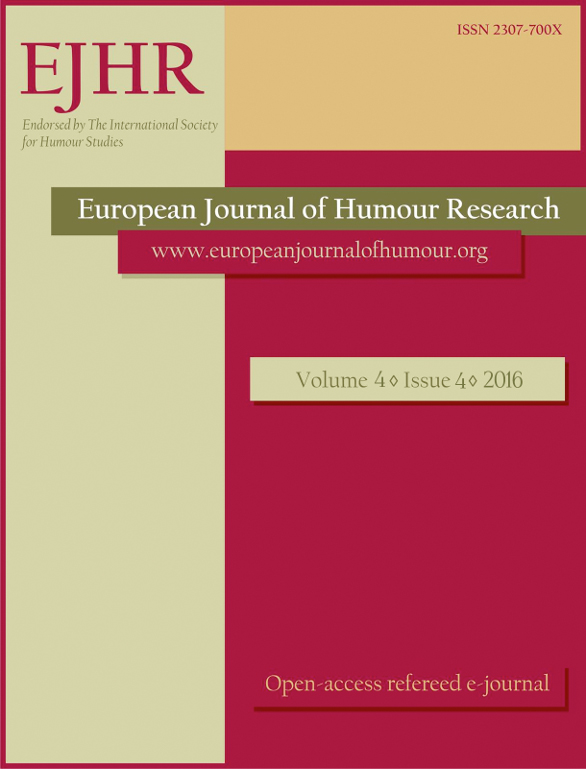
Internet humour flourishes on social network sites, special humour-dedicated sites and on web pages focusing on edutainment or infotainment. Its increasing pervasiveness has to do with the positive functions that humour is nowadays believed to carry – its bonding, affiliative and generally beneficial qualities. Internet humour, like other forms of cultural communication in this medium, passes along from person to person, and may scale (quickly or gradually, depending on the comic potential and other, sometimes rather elusive characteristics) into a shared social phenomenon, giving an insight into the preferences and ideas of the people who actively create and use it. The present research is primarily carried by the question of how the carriers of Internet humour, that is, memes and virals, travel across borders, to a smaller or greater degree being modified and adapted to a particular language and culture in the process. The intertextuality emerging as a result of adapting humorous texts is a perfect example of the inner workings of contemporary globalising cultural communication. Having analysed a corpus of 100 top-rated memes and virals from humour-dedicated web sites popular among Estonian users, we discuss how humour creates intertextual references that rely partly on the cultural memory of that particular (i.e. Estonian-language) community, and partly on global (primarily English- and Russian-language) cultural influences, thus producing hybrid cultural texts. The more interpretations are accessible for the audience (cf. polysemy Shabtai-Boxman & Shifman 2014), the more popular the text becomes, whereas the range of interpretations depends on the openness of the cultural item to further modification.
More...